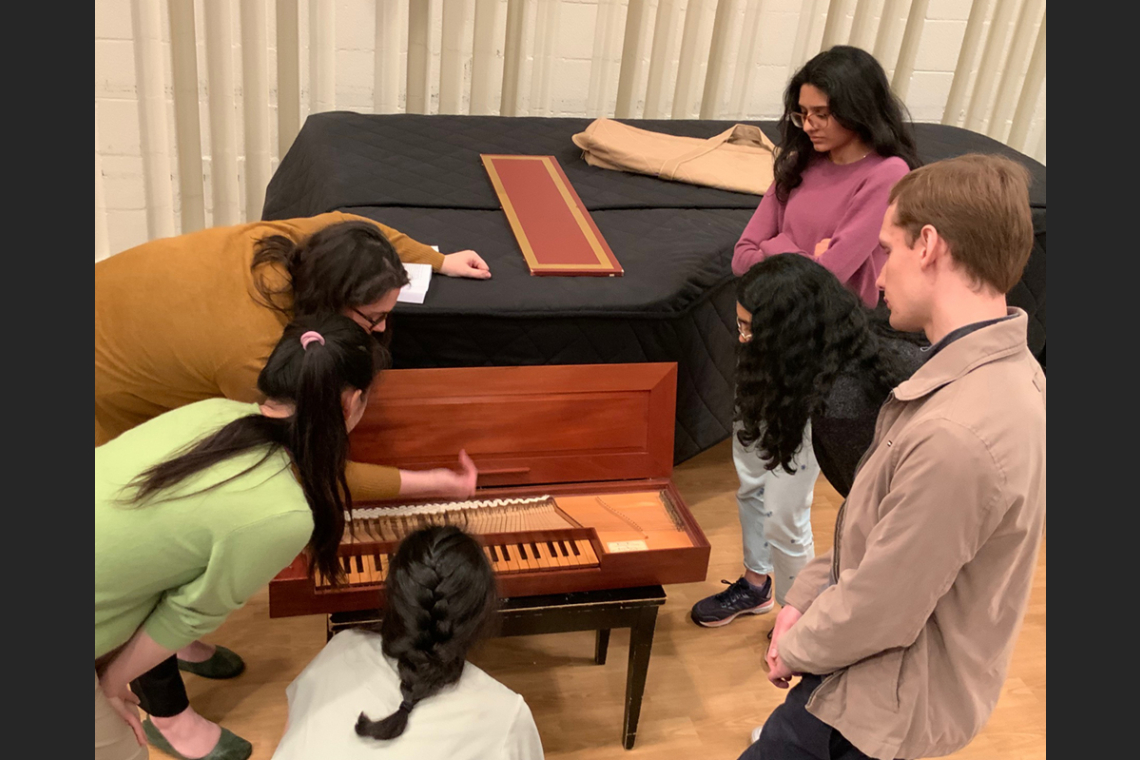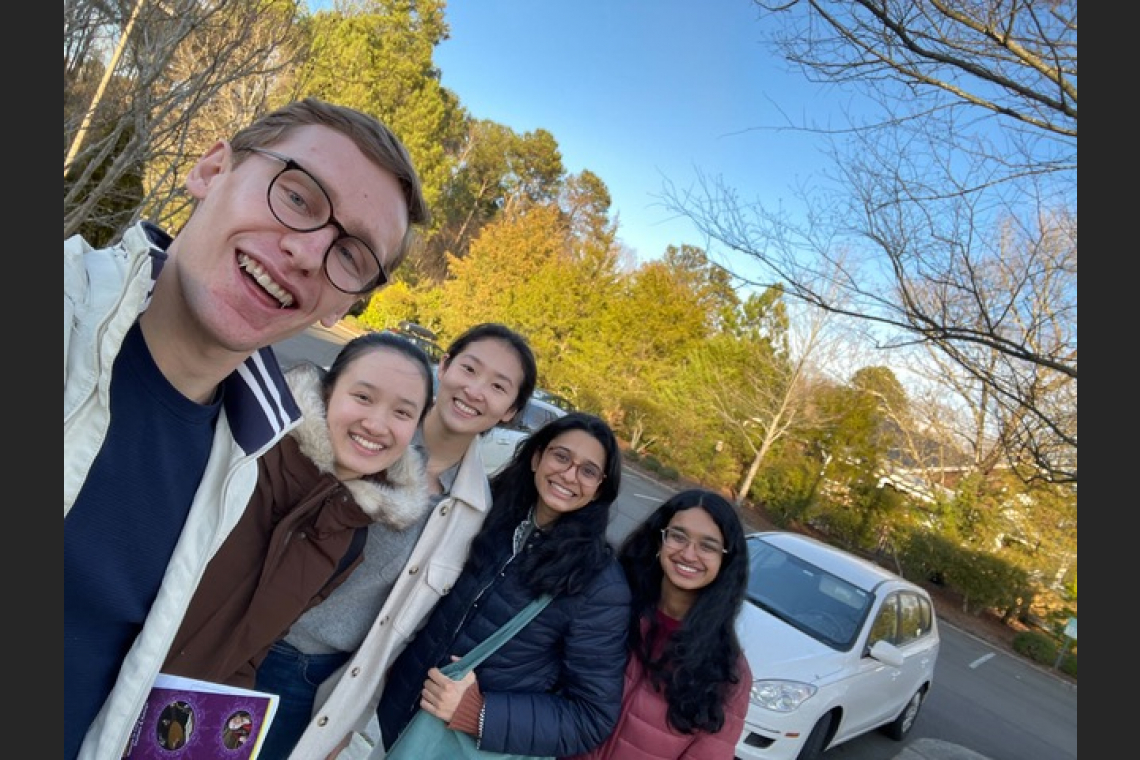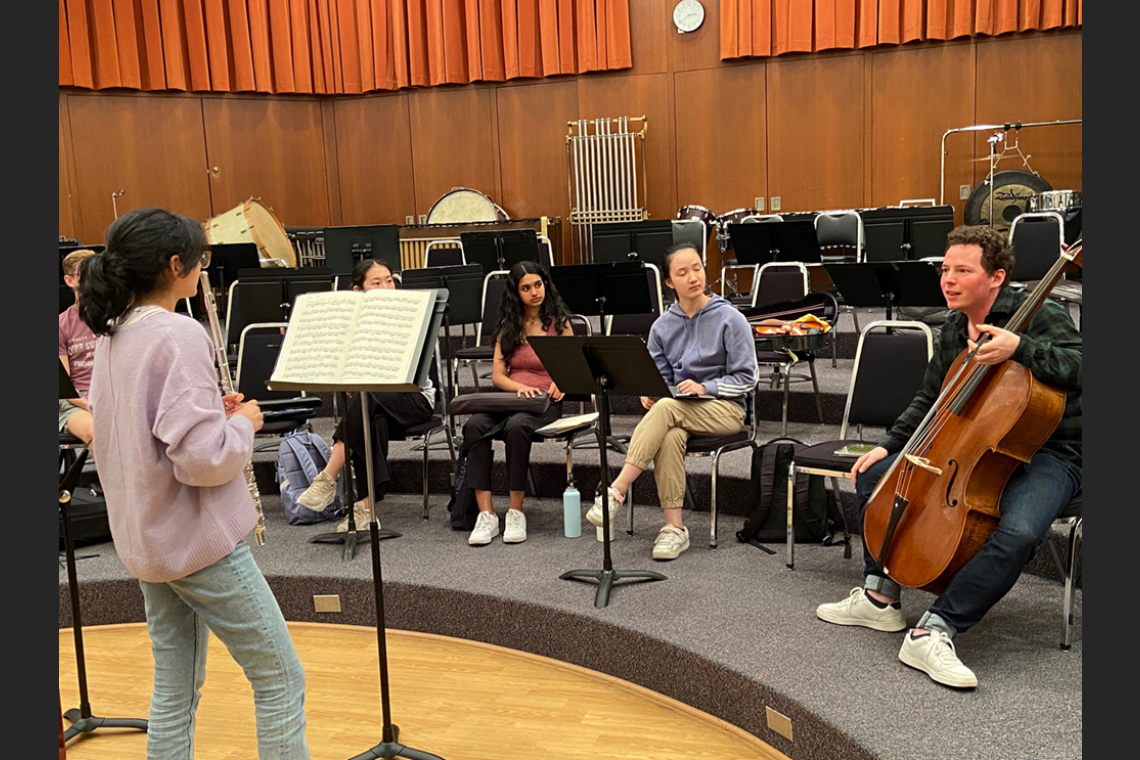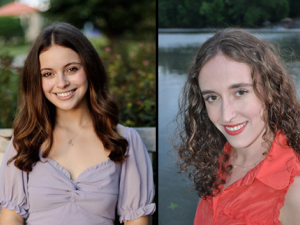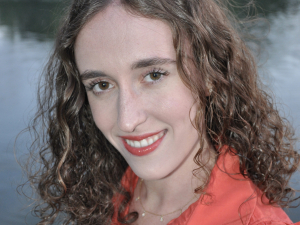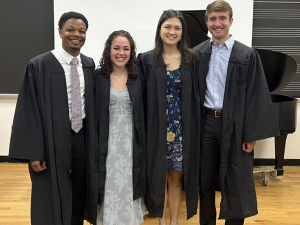Reading Between the Notes, a New Performance Practice Class in Spring 2023

A new class in Baroque performance practice was introduced in Spring 2023. "Reading Between the Notes" was developed by professors Roseen Giles, a musicologist specializing in early music, and Caroline Stinson, cellist of the Ciompi Quartet and Director of the Chamber Music Program. It was offered as MUS390-1: Special Topics in Interpretation and Performance.
The class focused on hands-on and experiential learning, whether it was exploring the Music Department's early music instruments, attending concerts in the community, or interacting with professional guest artists. Those guests included Jennifer Streeter, who taught keyboard students some continuo playing and played continuo for all the works presented by students in class; cellist Keiran Campbell from Tafelmusik in Toronto, who also played continuo with students and gave them feedback on their performances; and Paige Whitley-Bauguess, who taught the students dance steps to many of the common dances of the Baroque period. Giles and Stinson were able to bring the guest artists to Duke through a grant from the Duke Endowment.
"It’s been a wonderful semester of discovering Baroque music of Germany, France and Italy," said Stinson. She and Giles are planning to offer "Reading Between the Notes" again in Spring 2025.
Caroline Stinson is Associate Professor of the Practice of Music, Ciompi Quartet cellist and Director of the Chamber Music Program. Roseen Giles, an early music specialist, is Assistant Professor and Director of the Duke University Musical Instrument Collections (DUMIC).
Student Projects
These descriptions written by the students have been edited for length.
This semester, I completed my final project about music for low-register (second) horn players in the early-mid eighteenth century. Relatively little written music for horn survives from this time period, but a good amount survives from the important city of Dresden. My project focused on new technical developments introduced to Dresden, and how these technical developments allowed new low-register styles of horn playing to develop. I also researched the social factors in Dresden (such as increased pay and specialization) that allowed horn players the freedom to develop these techniques.
This class combined performance and research-based approaches. So, along with writing a paper, I was able to perform a lecture recital about my topic. I demonstrated "hand-stopping" and "lipping" techniques, and then played horn concertos by Johann Reinhardt and Joseph Haydn to show how these techniques would be used in practice. I also performed a line of a Beethoven Symphony to show how these techniques extended beyond the Baroque and early Classical periods. -- Andrew Kelbley
***
For my project, I was interested in exploring how Georg Muffat's 1677 violin sonata had several characteristics uncommon to the 17th-century baroque era. I examined how Muffat incorporated both the French and Italian styles of violin playing as well as how he used chromaticism to traverse to farther keys and enharmonicism in his sonata. As a violinist, it was very intriguing to apply the different baroque playing styles I learned in class to my recital at the end of the semester! -- Cynthia Ma
***
My research project was titled "Courting the Community: Tafelmusik in 18th Century Germany and Beyond." Tafelmusik (Musique de Table) refers to the music that would play at the banquets and feasts that the aristocracy held during the 17th and 18th centuries. Tafelmusik was created for the aristocracy yet played by lower-class virtuosi. Tafelmusik features simple melodic lines and repetitive phrases that can be easily followed by the amateur listener-- however, a study of the scores reveals that the pieces are composed of complicated technical components, and the performer must make them look easy.
I found that Tafelmusik is continually bridging gaps in some way, whether that be in operatic settings, between class lines, or by defying the boundaries of country-specific style. Despite conforming to tradition-- in the sense that it was originally created with the aristocracy in mind-- Tafelmusik marks a transitional moment in the ending stages of table music as a genre, in terms of economic viability. While earlier table music compositions were targeted towards the aristocracy, Tafelmusik could be bought by anyone who had sufficient funds to purchase it. This allowed such music to make its way into other social spheres-- table music could now potentially be played in non-aristocratic settings, as was the case in the late 18th century. In this manner, Tafelmusik simultaneously subscribes to and breaks away from its earlier table music counterparts. In the modern day, Tafelmusik still has a firm hold on the ways in which we navigate balancing complicated technical elements with our intended audiences. It is a collection that has the ability to “court” all of us differently, depending on what musical background we already bring to the table. -- Trisha Santanam
***
I conducted research on Jean Philippe Rameau's Pieces de Clavecin en concerts (1741), a composition for harpsichord and two accompanying melodic instruments. Unlike many other works where the harpsichord plays a secondary role as the continuo, in this piece the harpsichord takes on an important and equal role alongside the other instruments to create a variety of textures. Through my analysis of these textures, I gained insight into the development of both keyboard and chamber music. During my lecture recital, I shared my research findings by playing excerpts from the work with my classmates. This class provided me with a deeper understanding of Baroque music and its influence on subsequent musical traditions, and for that, I am truly grateful. -- Vicky Yang

